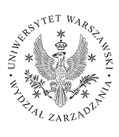Tytuł
Strategie finansowania globalnych systemowo ważnych banków
ORCID
Igor Kravchuk: 0000-0003-2556-8877
Keywords
G-SIBs, bank, assets and liabilities management, wholesale-based funding, deposit-based funding
Słowa kluczowe
G-SIBs,bank,zarządzanie aktywami i pasywami,finansowanie hurtowe,finansowanie depozytowe
Abstract
Purpose: The purpose of the article is to analyze the main features of the identified funding strategies of G-SIBs and changes in strategies under the influence of financial market conditions and new regulatory requirements. Methods: The proposed method uses cluster analysis of the main indicators for banking funding (the share of deposits in liabilities, the share of derivatives in liabilities, the share of subordinated liabilities in total liabilities, as well as the share of short-term wholesale funding in liabilities) based on the agglomerative hierarchical clustering algorithm of Ward and the Hartigan Index as the criterion for evaluating the optimal number of clusters. The research covers G-SIBs, spanning the period 2007–2018. Findings & Value added: The study has allowed to identify three main groups of banking strategies – deposit-based, mix and wholesale-based. Changes in the main features of these strategies have indicated the growth of the role of deposit funding, and a clear decrease in the value of derivatives in the structure of liabilities of G-SIBs. These two trends confirm the efficiency of the introduced regulatory measures to ensure higher financial soundness of banks and reduced funding risks. The study finds that the growth of deposit funding is not accompanied by an increase in the share of loans in assets. Regulatory authorities should introduce mechanisms that would have a major impact on changing strategies of asset management for global banks to increase the role of loans, which will have a positive impact on the development of the real economy.
Abstrakt
Cel: celem artykułu jest analiza głównych cech zidentyfikowanych strategii finansowania G-SIBs oraz zmian w strategiach pod wpływem warunków rynku finansowego i nowych wymogów regulacyjnych. Metody: proponowana metoda wykorzystuje analizę skupień głównych wskaźników finansowania bankowego (udział depozytów w zobowiązaniach, udział instrumentów pochodnych w zobowiązaniach, udział zobowiązań podporządkowanych w pasywach ogółem, a także udział krótkoterminowego finansowania hurtowego w zobowiązaniach) i opiera się na hierarchicznym podejściu do analizy skupień aglomeracyjną metodą Warda oraz wskaźniku Hartigana jako kryterium oceny optymalnej liczby skupień. Badania obejmują dane G-SIBs w okresie 2007–2018. Wyniki i wartość dodana: badanie pozwoliło zidentyfikować trzy główne grupy strategii banków: depozytową, mieszaną i hurtową. Zmiany w głównych cechach tych strategii wskazały na wzrost roli finansowania depozytowego oraz wyraźny spadek wartości instrumentów pochodnych w strukturze zobowiązań G-SIBs. Te dwie tendencje potwierdzają skuteczność wprowadzonych środków regulacyjnych w celu zapewnienia większej stabilności finansowej banków i zmniejszenia ryzyka finansowania. Z badania wynika, że wzrostowi finansowania depozytów nie towarzyszy wzrost udziału kredytów w aktywach. Dlatego z punktu widzenia organów regulacyjnych warto wprowadzić mechanizmy, które w znacznym stopniu wpłyną na zmianę strategii zarządzania aktywami dla globalnych banków w celu zwiększenia roli kredytów i pozytywnie wpłyną na rozwój gospodarki realnej.
Recommended Citation
Kravchuk, I. (2021). Funding Strategies of G-SIBs. Problemy Zarządzania, 18(90), 14-31. https://doi.org/10.7172/1644-9584.90.1
First Page
14
Last Page
31
Page Count
17
DOI
10.7172/1644-9584.90.1
Publisher
University of Warsaw








